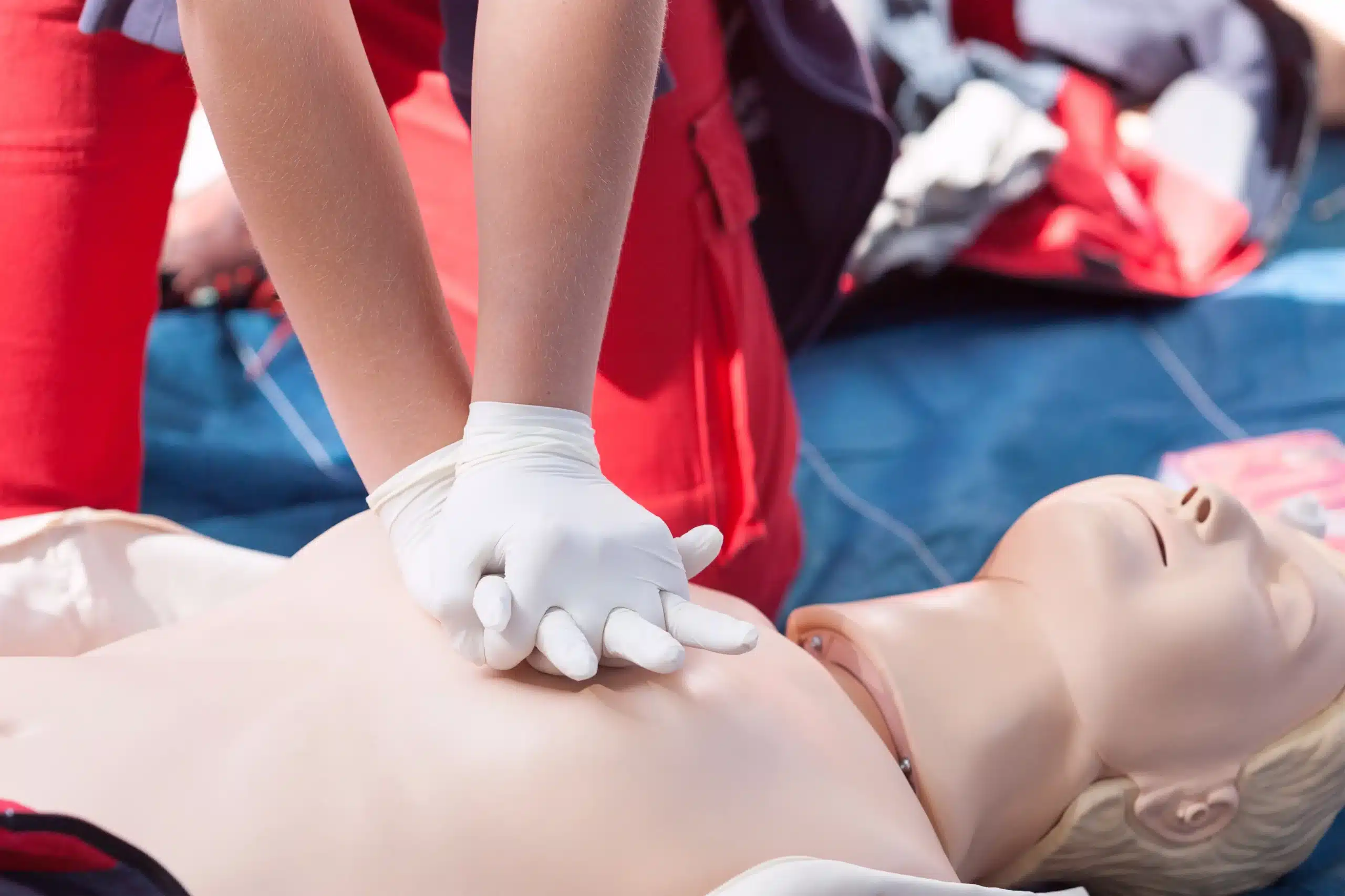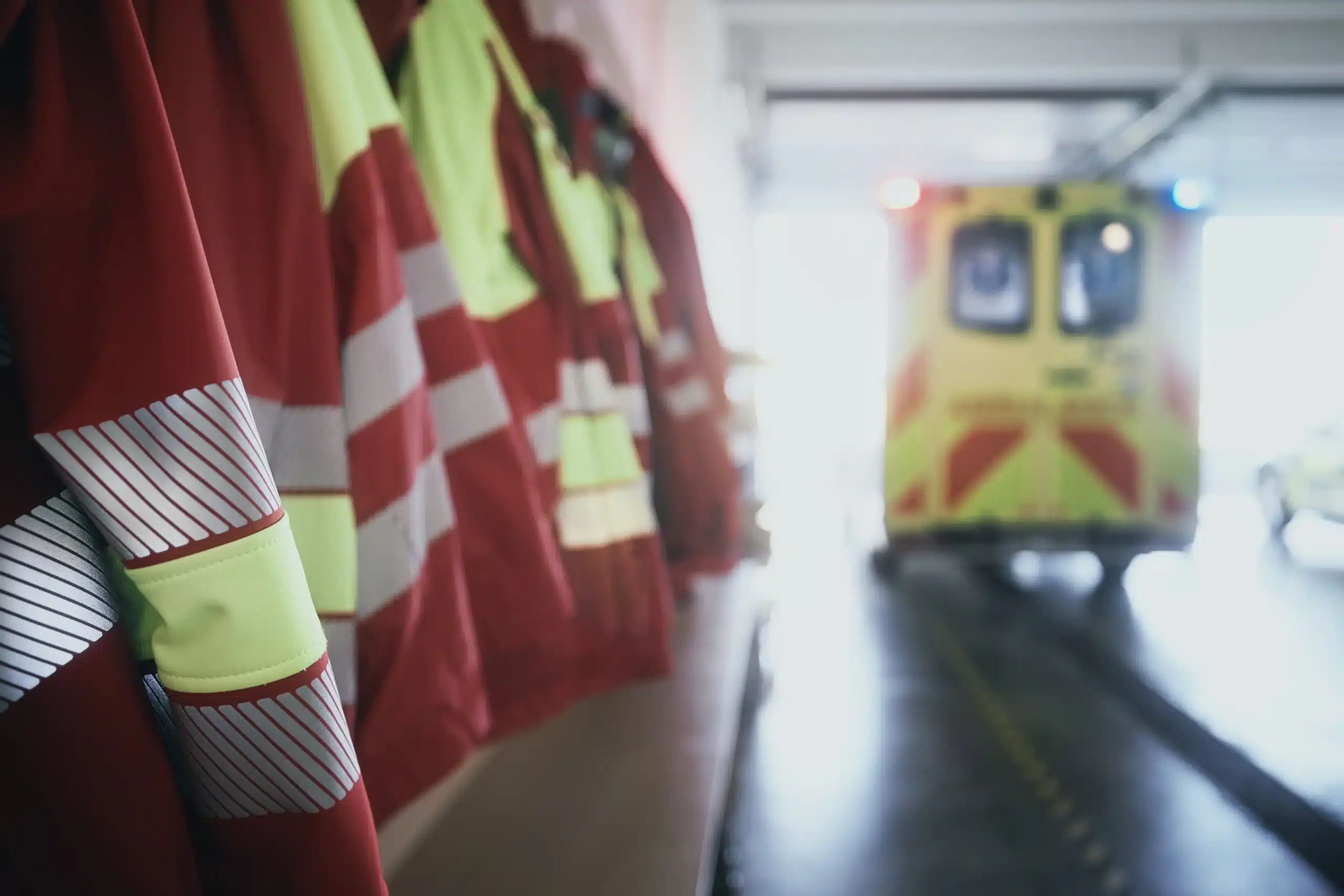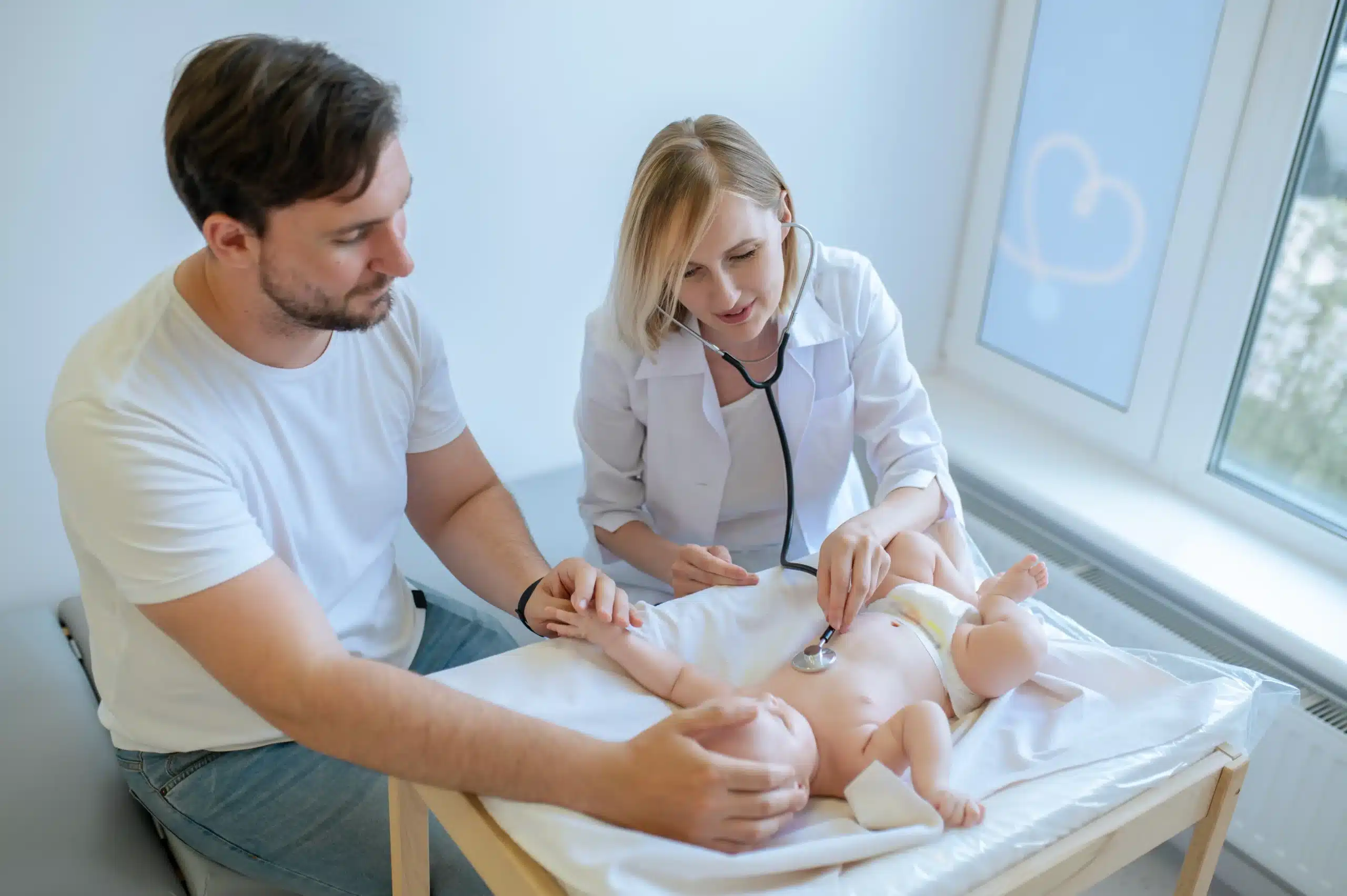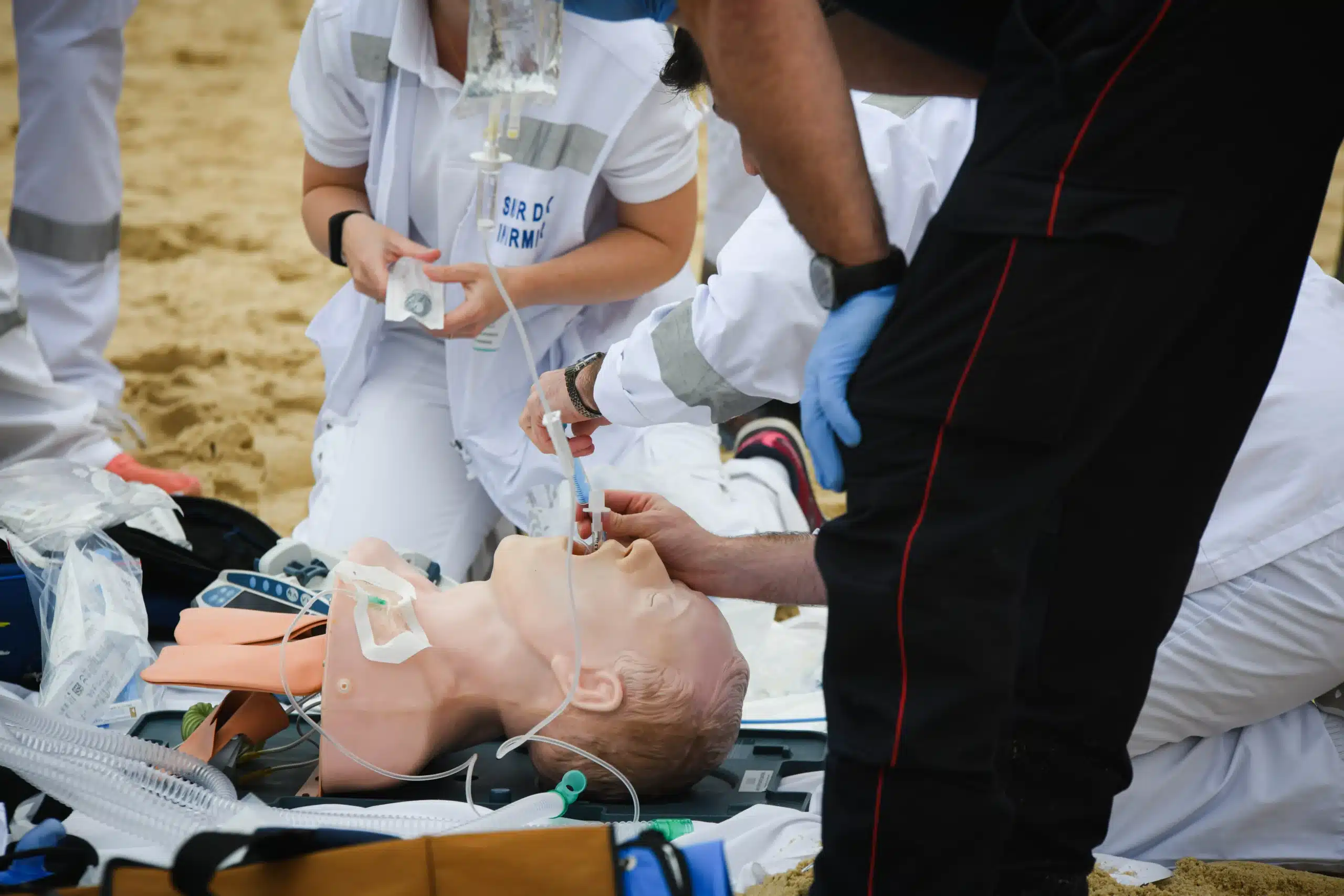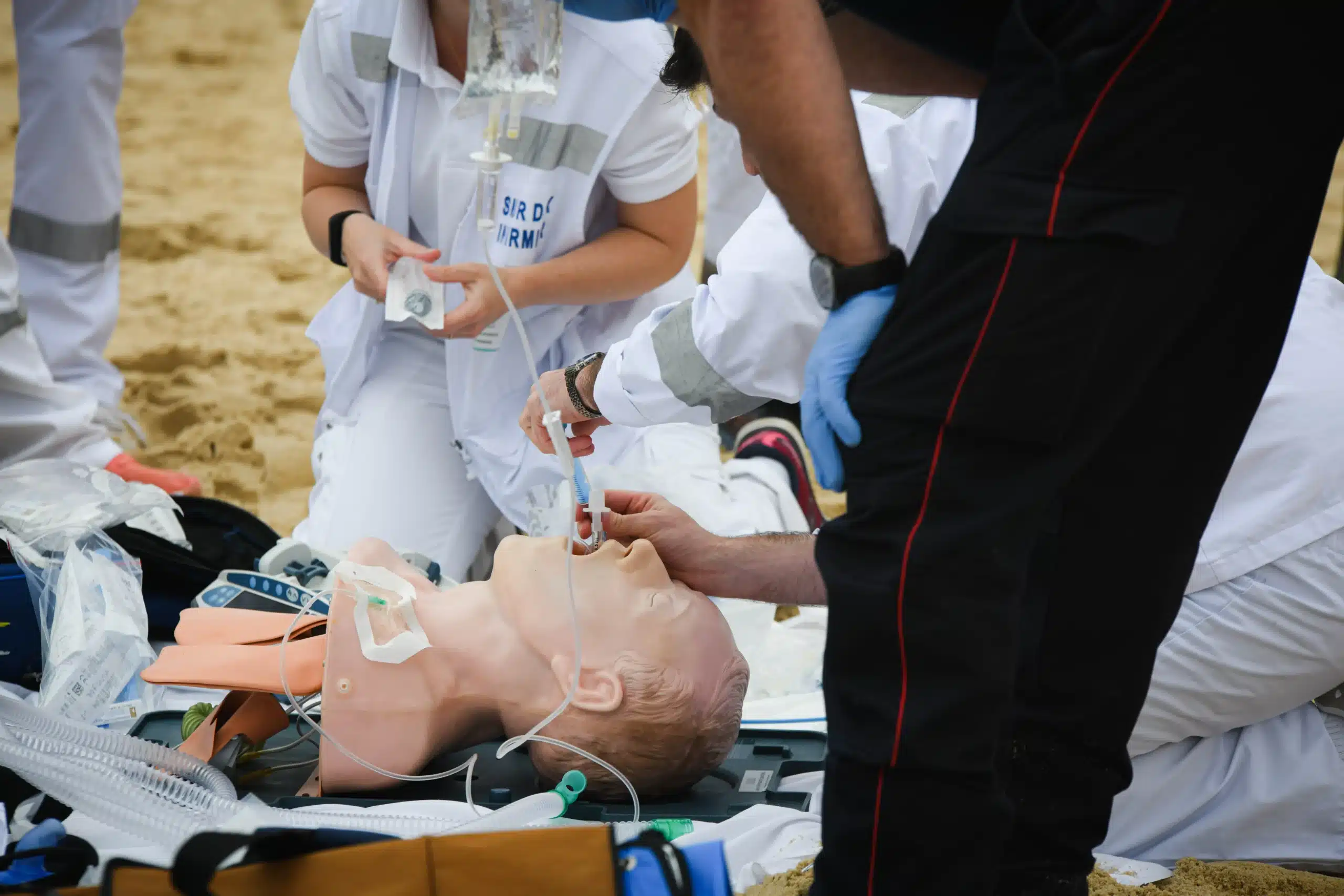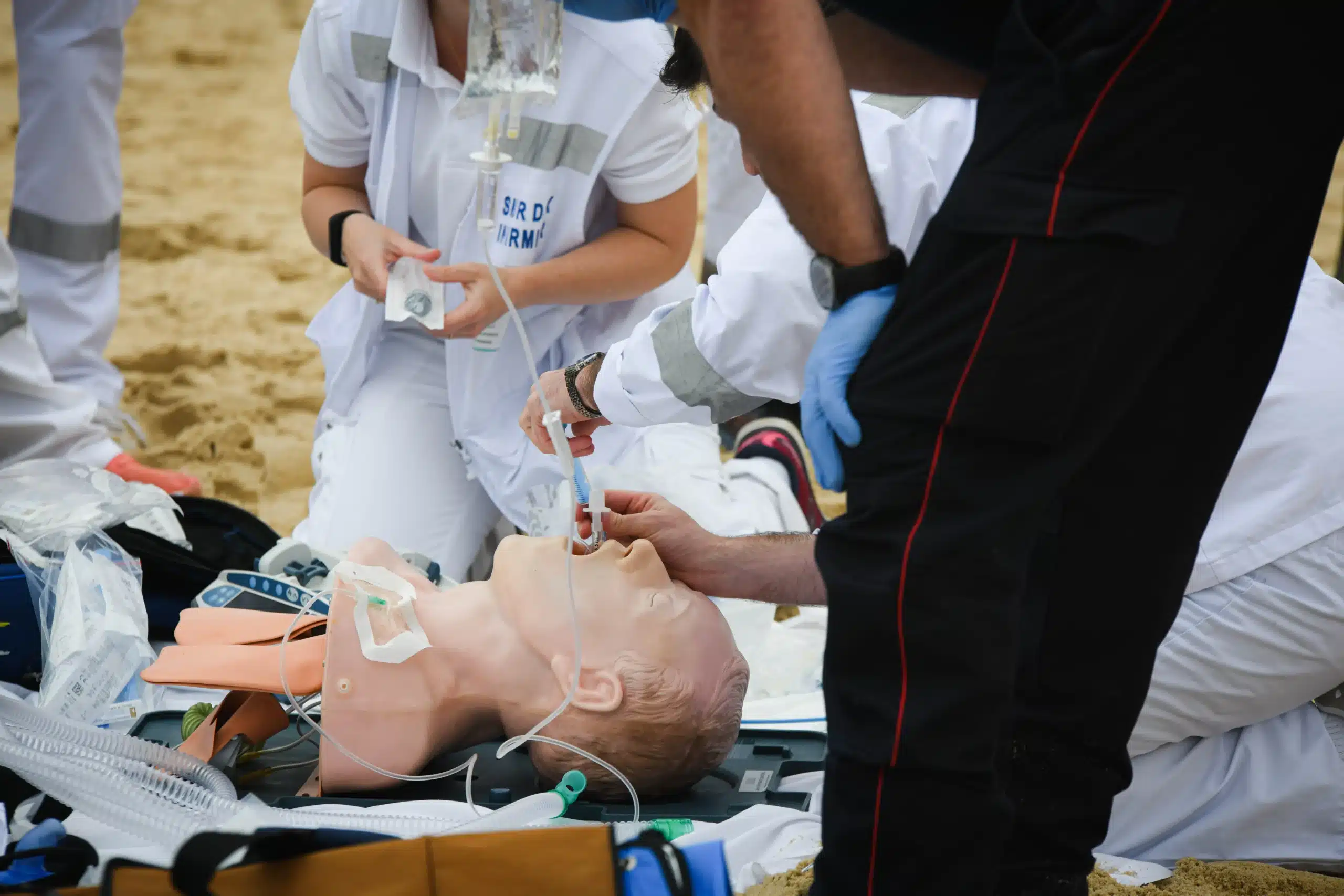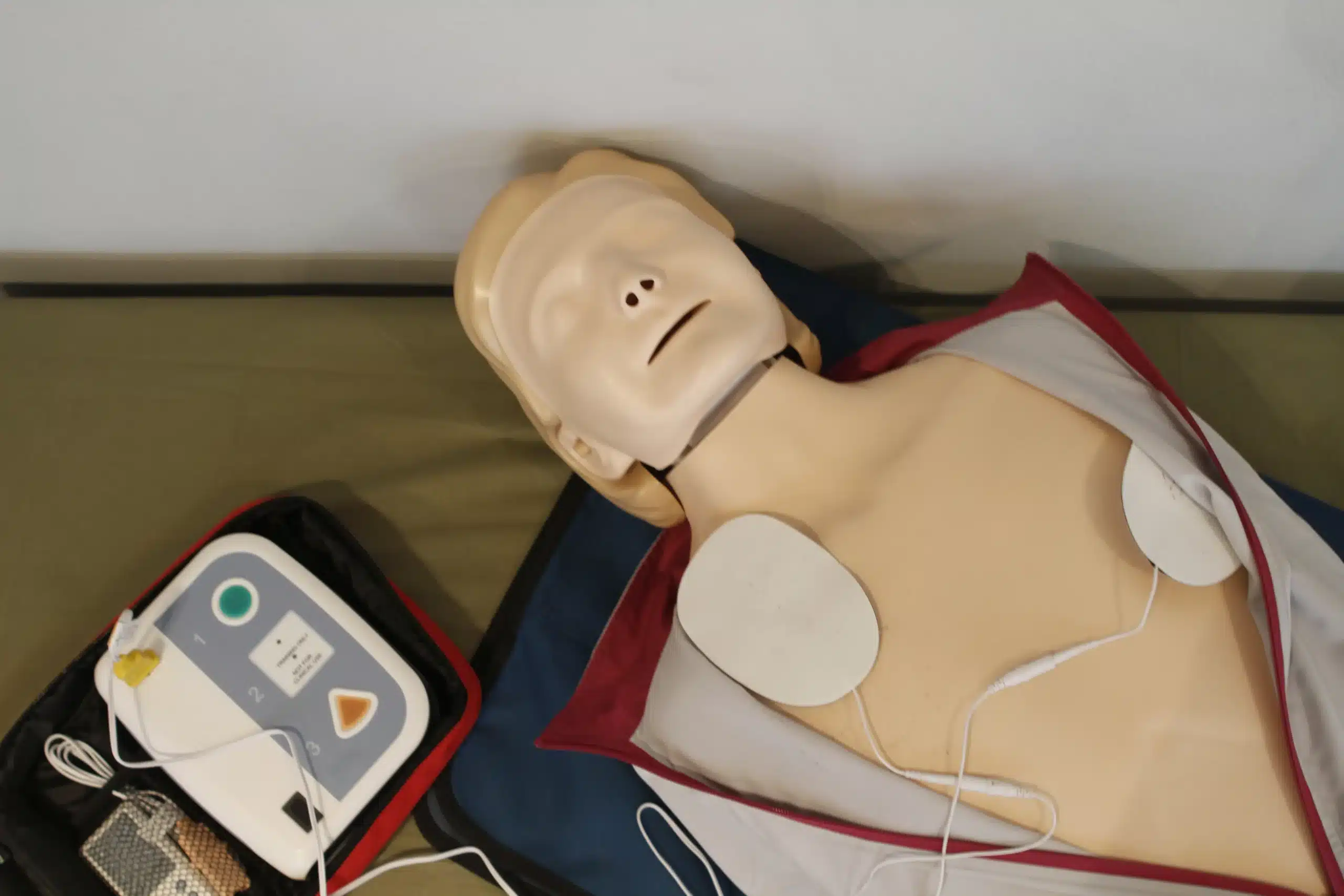Life is unpredictable, and being prepared for emergencies is a responsibility we all share. CPR certification equips you with the skills to respond confidently in critical situations, but these skills need regular refreshing. If you live in San Ramon and your CPR certification is about to expire, this guide will walk you through the seamless process of CPR renewal in San Ramon. We’ll cover everything from the different types of courses available, like BLS, ACLS, and PALS, to finding a reputable provider that offers convenient schedules and competitive pricing. We’ll also debunk some common misconceptions about CPR renewal and help you choose the best course format for your learning style.
Key Takeaways
- Stay current with your CPR skills through renewal courses. Find convenient options like online, in-person, or blended learning. Make sure your chosen provider offers official certification upon completion.
- Choose the right CPR renewal course (BLS, ACLS, PALS) based on your professional or personal needs. Explore reputable providers in your area, such as Pleasanton CPR Classes or Safety Training Seminars, to find the best fit.
- Balance cost with the value you receive from a CPR renewal course. Look for experienced instructors, smaller class sizes, and convenient locations. Don’t hesitate to compare pricing and check for available discounts.
What is CPR Renewal in San Ramon?
If your CPR certification is expiring, you’ll need a CPR renewal course. You can find BLS renewal courses in San Ramon through various providers, including Pleasanton CPR Classes. These courses cover the same life-saving techniques as the initial CPR certification but are designed as a refresher. Just like your initial certification, your CPR renewal will come with an official certification card upon completion. Renewal courses are readily available, making it easy to fit into your schedule.
Why Renewal Matters
CPR skills can fade, and guidelines can change. Renewing your BLS certification ensures your skills are current and you’re prepared to respond effectively in an emergency. It’s quicker than you might think, especially with blended learning formats that combine online coursework with in-person skills sessions. A current CPR certification also demonstrates your commitment to safety, which can be valuable professionally. Whether for work, personal knowledge, or peace of mind, staying current is essential. CPR certification empowers you to act confidently in emergencies.
Common Misconceptions
One common misconception is that there’s only one place to renew your CPR certification. Several providers offer BLS renewal courses in San Ramon and the surrounding areas, including Pleasanton CPR Classes, giving you options. Another misconception is that renewal requires retaking the entire course. Renewal courses are streamlined, focusing on key skills and updates for an efficient process. Many providers also offer combined CPR and first-aid certification courses, allowing you to refresh both skill sets at once.
Find Your CPR Renewal Course
So, you’re ready to renew your CPR certification—fantastic! Finding the right renewal course in San Ramon doesn’t have to be complicated. This section breaks down everything you need to know, from the types of courses available to what to expect regarding time commitment and cost.
Types of Courses (BLS, ACLS, PALS)
First, let’s clarify the different types of CPR renewal courses. The most common certifications are Basic Life Support (BLS), Advanced Cardiovascular Life Support (ACLS), and Pediatric Advanced Life Support (PALS). BLS is typically required for healthcare providers, teachers, and other professionals who might need to administer CPR. Pleasanton CPR Classes offers a range of courses including BLS. ACLS is geared towards healthcare professionals who manage cardiopulmonary arrest or other cardiovascular emergencies. PALS focuses on the specialized needs of infants and children. You can find BLS, ACLS, and PALS renewal courses through various providers in San Ramon and the surrounding areas, including Safety Training Seminars.
Online vs. In-Person
Next, consider whether you prefer online, in-person, or blended learning. Online courses offer flexibility, allowing you to complete the coursework at your own pace. In-person classes provide hands-on training and direct interaction with an instructor. Blended learning combines the best of both worlds. You’ll complete online modules and then attend a shorter in-person session to practice your skills. This blended format is often a convenient way to renew your CPR certification.
Course Length and Certification
Finally, think about the time commitment and certification process. BLS renewal courses are generally shorter than initial certification courses. The length varies depending on the provider and the format you choose. As for certification, make sure the course you select provides an official American Heart Association certification card upon completion. Course fees in San Ramon vary, so comparing pricing and checking for any included extras like study materials or exam fees is always a good idea. Safety Training Seminars strives to provide competitive pricing for these essential courses.
Renew Your CPR Certification
So, your CPR certification is about to expire—now what? Don’t worry, renewing is straightforward. This section walks you through the process, from understanding the steps to getting your new card.
Steps to Renew
Renewing your BLS certification is often quicker than getting certified initially, especially with a blended learning format. Many providers, like San Ramon CPR Courses, offer this option, combining online coursework with an in-person skills session. This allows you to learn the material at your own pace and then demonstrate your skills. You’ll complete the online portion first, covering essential concepts and procedures. Then, you’ll schedule a short in-person session to practice and be tested on your skills.
Prerequisites
Before signing up for a renewal course, double-check that your current certification is still valid or hasn’t been expired for too long. Some providers may have restrictions on how long a certification can lapse before requiring a full course. Also, check the course fees, which can vary based on the training provider, the format (online, in-person, or blended), and any included extras like study materials or exam fees. Clarifying these details upfront is always a good idea.
Get Your New Certification
Once you’ve completed both the online portion and the in-person skills session, you’ll receive your updated CPR certification card. Several providers offer BLS renewal courses in San Ramon and the surrounding areas, including Safety Training Seminars, Heart Start CPR, Lifework Education, and Pleasanton CPR Classes. San Ramon CPR Courses also offers other American Heart Association certifications, including BLS, ACLS, PALS, and CPR/First Aid, so you can conveniently renew multiple certifications at once if needed. With your new card, you’ll be ready to respond confidently in an emergency.
Choose the Right CPR Renewal Course
Finding the right CPR renewal course takes a little research, but it’s worth the time to ensure you receive high-quality training. This section breaks down the key factors to consider when making your decision.
Factors to Consider
CPR renewal course fees in San Ramon vary depending on the training provider, the course format (online, in-person, or blended), and whether extras like study materials or exam fees are included. Pleasanton CPR Classes offers a low price guarantee to help simplify your decision. Beyond cost, consider your learning style. Do you prefer hands-on instruction or the flexibility of online learning? Location is also important. Choose a training center that’s convenient, like Pleasanton CPR Classes, serving Pleasanton, Dublin, and San Ramon. Finally, check the certification the course offers and ensure it aligns with your professional requirements. For many healthcare professionals, this means an American Heart Association certified course.
Match Courses to Your Needs
Not all CPR renewal courses are the same. Healthcare providers often need a BLS renewal course. Other professionals might require CPR and First Aid certification. Understand which course best suits your job requirements or personal goals. Choose a high-quality course with experienced, certified instructors. Smaller class sizes can also be beneficial, providing more personalized attention. Pleasanton CPR Classes offers various courses, including RQI classes, to meet different needs. Consider whether you need basic CPR renewal or more advanced training like ACLS or PALS.
In-Person vs. Online Benefits
Renewing your BLS certification is often quicker than you expect, especially with blended learning. This format combines online coursework with shorter, in-person skills sessions, offering a convenient way to fit training into your schedule. Fully online renewal courses provide maximum flexibility, letting you complete the coursework at your own pace. However, in-person training offers hands-on practice and direct interaction with an instructor. Consider which learning style best suits your needs and the requirements of your certifying body. If you value in-person learning and want to save money, consider discount group class options.
Meet the Instructors
Choosing the right CPR instructor is just as important as choosing the right course. You want someone who can create a comfortable learning environment, answer your questions thoroughly, and provide clear, confident instruction. So, what should you look for?
Professional Backgrounds
Instructors with real-world experience bring a depth of understanding that goes beyond the textbook. Look for classes taught by active firefighters, paramedics, or healthcare providers. Their hands-on experience translates to practical, relevant training, giving you the confidence to respond effectively in a real emergency. Learning from professionals currently working in the field often creates a more engaging and low-stress learning environment. They can share real-life anecdotes and answer questions based on their current practices. Pleasanton CPR Classes, for example, emphasizes its commitment to excellent customer service, which often reflects the quality of instruction you can expect.
Specialized Training
Beyond basic CPR certification, many instructors have specialized training in advanced life support techniques. This can be incredibly valuable if you’re pursuing certifications like ACLS (Advanced Cardiac Life Support) or PALS (Pediatric Advanced Life Support). Consider checking if instructors have backgrounds in areas like emergency services consulting or specialized rescue training. This additional expertise can enrich your learning experience and prepare you for a wider range of emergency scenarios. Providers like Heart Start CPR offer a comprehensive range of courses, including CPR, First Aid, BLS, ACLS, and PALS. This breadth of training options often indicates a team of instructors with diverse specializations. If you have specific training needs, contact the training center and inquire about the instructors’ qualifications and experience. Pleasanton CPR Classes offers various American Heart Association certifications, indicating a likely range of instructor expertise.
Compare Costs and Value
Finding the right CPR renewal course often involves balancing cost with the value you receive. Let’s break down how to evaluate pricing, discounts, and the overall quality of training.
Pricing
CPR renewal course costs in San Ramon can differ based on several factors. The training provider, the course format (online, in-person, or blended), and included materials all contribute to the final price. Providers like Pleasanton CPR Classes offer in-person classes designed to fit various budgets, so doing some initial research is helpful.
Discounts
Many CPR training providers offer discounts to make these essential courses more accessible. Check if a provider has student discounts, special promotions, or a low price guarantee, like the one offered by Pleasanton CPR Classes. These can significantly reduce the cost, especially helpful if you’re watching your budget.
Investment vs. Quality
While cost is a factor, the quality of your CPR training is paramount. Think of it as an investment in your skills and confidence to handle emergencies. Look for courses with experienced, certified instructors, smaller class sizes for more personalized attention, and convenient locations. A high-quality BLS renewal course can make all the difference in your preparedness. Blended learning formats, combining online and in-person elements, can also be a great way to streamline the renewal process while maintaining quality.
Top CPR Renewal Providers in San Ramon
Finding the right CPR renewal course can feel overwhelming, but several excellent providers serve the San Ramon area. Here’s a closer look at some of your options to help you find the perfect fit:
Pleasanton CPR Classes
Pleasanton CPR Classes offers American Heart Association (AHA) BLS renewal courses. Conveniently located in nearby Pleasanton, they serve residents of Dublin and San Ramon. Their courses adhere to the latest AHA guidelines, ensuring your training is up-to-date.
Safety Training Seminars
Safety Training Seminars, a woman-owned AHA Training Center, provides high-quality AHA BLS, ACLS, PALS, CPR, and First-aid renewal courses in San Ramon and surrounding areas. With classes offered daily, they make it easy to fit renewal training into your busy schedule. Explore their website for more information.
Heart Start CPR
Heart Start CPR provides both online and on-site training options, including BLS, ACLS, and PALS renewals. Serving the broader San Francisco Bay Area, they certify thousands of students annually. Visit their website for details on their CPR renewal options.
CPR Education
CPR Education offers CPR and First Aid renewal classes in San Ramon for individuals and businesses. Their instructors are active firefighters, bringing valuable real-world experience to the classroom. Find details on their CPR and First Aid training.
CPR Training Center
With nearly three decades of experience as an AHA-certified training center, CPR Training Center in San Ramon offers a comprehensive range of CPR and advanced life support renewal courses, including ACLS, PALS, BLS, and NRP. They also provide convenient online options for BLS skill checks and ACLS renewal. Learn more about their CPR training programs.
Decide on Your CPR Renewal
Now that you understand the importance of CPR renewal and the various courses available, it’s time to make a decision. Finding the right course involves considering several factors, from cost and schedule to the quality of instruction and the learning environment. Let’s recap some key takeaways to help you choose wisely.
Key Takeaways
BLS renewal course fees in San Ramon vary depending on the training provider, the course format (online, in-person, or blended), and any included extras like study materials or exam fees. Comparing pricing from different providers, such as Pleasanton CPR Classes, helps ensure you’re getting good value. Look for providers that offer a low price guarantee for extra reassurance. Selecting a high-quality course is essential. Prioritize finding experienced, certified instructors, smaller class sizes for more personalized attention, and convenient locations. Several providers offer BLS renewal courses in San Ramon and surrounding areas, including Safety Training Seminars.
Next Steps
Ready to renew your CPR certification? San Ramon CPR Courses offers AHA BLS, ACLS, PALS, CPR, and First-aid certification courses seven days a week in San Ramon and nearby cities. Renewing your BLS certification is often faster than you might expect, especially with the blended learning format offered by providers like San Ramon CPR Courses. Explore reputable training providers like Safety Training Seminars, compare course costs and schedules, and discover the benefits of maintaining your CPR certification.
Related Articles
- Online CPR Classes in San Ramon: Your Complete Guide
- BLS Renewal in San Ramon: Your Guide to Certification – Pleasanton CPR Classes
- CPR Certification in San Ramon: Your Complete Guide – Pleasanton CPR Classes
- CPR Renewal in Pleasanton: Your Easy Guide – Pleasanton CPR Classes
- Your Guide to CPR Renewal in Dublin – Pleasanton CPR Classes
Frequently Asked Questions
How long does it take to renew my CPR certification?
CPR renewal courses are generally shorter than initial certification courses, often taking just a few hours. Blended learning formats, combining online coursework with a shorter in-person skills session, can be the quickest option. The exact time commitment will depend on the specific course and provider you choose.
What’s the difference between BLS, ACLS, and PALS renewal courses?
BLS (Basic Life Support) is the standard CPR certification for most healthcare providers, teachers, and other professionals. ACLS (Advanced Cardiovascular Life Support) is for healthcare professionals who manage cardiopulmonary arrest and other cardiovascular emergencies. PALS (Pediatric Advanced Life Support) focuses on the specific needs of infants and children. Choose the renewal course that aligns with your professional requirements.
Where can I find CPR renewal courses near me?
Several providers offer CPR renewal courses in San Ramon and the surrounding areas, including Pleasanton CPR Classes, Safety Training Seminars, Heart Start CPR, and more. Check online directories or search for “CPR renewal near me” to find local options. When choosing a provider, consider factors like cost, schedule, instructor experience, and location convenience.
What should I look for in a CPR instructor?
Look for certified instructors with real-world experience, ideally active or former healthcare providers or emergency responders. A good instructor will create a comfortable learning environment, answer your questions clearly, and provide confident, practical instruction. Smaller class sizes can also offer more personalized attention.
How much does it cost to renew my CPR certification?
CPR renewal costs vary depending on the provider, course format (online, in-person, or blended), and included materials. Many providers offer discounts, so check for student discounts, group rates, or special promotions. While cost is a factor, prioritize the quality of the training. A slightly higher price might be worth it for experienced instructors and a better learning environment.
